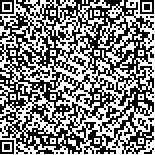| 摘要: |
| 目的 为明确我国不同地区不同播期内进行设施农业生产可能遭遇的主要灾害类型、合理利用全国的气候资源、布局设施农业提供科学依据。方法 文章利用1990—2019年我国693个标准气象站逐日气象资料,针对设施农业全年皆可生产的特性,将全年分为12个播期(每月1日移栽),考虑高温、低温、日照、大风四个方面,对各个播期进行单气象要素适宜性评估,运用集优法对各个播期进行综合气候适宜性评价,采用各省设施番茄的生产成本对评价结果进行验证。结果 (1)低温不适宜区主要分布在我国东北、华北和西北地区以及华东北部和西南北部地区7月至次年2月的播期;高温不适宜区主要在我国华东南部、中南南部地区,西南部分地区和新疆中南部2—7月的播期;日照和大风的不适宜区不随季节发生较大的改变,日照不适宜区主要分布在我国中南地区、华东南部地区和西南东部地区,大风不适宜区主要出现在我国青海地区和内蒙古北部地区。(2)在7月至次年2月的播期,综合不适宜的主要地区出现在我国东北、西北和西南的部分地区以及华北南部地区;3—6月的播期中,综合不适宜的主要地区变为我国华东南部地区以及中南、西北和西南的部分地区。(3)各省设施番茄的多年平均生产成本与综合气候适宜性等级呈负相关,固定资产折旧费与低温、大风适宜性等级呈负相关,且大多数播期都达到了0.05显著性水平,验证了气候适宜性评估结果的合理性。结论 我国设施农业在不同播期下遭受的主要灾害类型不同,对于7月至次年2月开始的播期,综合气候不适宜主要是由低温、大风造成;对于3—6月开始的播期,综合气候不适宜主要由高温、寡照带来。研究结果为设施作物生长提供最优气候条件提供重要科学依据。 |
| 关键词: 设施农业 不同播期 气候适宜性评价 气象灾害 生产成本 |
| DOI:10.7621/cjarrp.1005-9121.20221121 |
| 分类号:P49 |
| 基金项目:国家重点研发计划项目“主要经济作物气象灾害风险预警及防灾减灾关键技术”(2019YFD1002202);国家自然科学基金项目“高温胁迫下氮素对设施番茄果实糖酸代谢影响机理与品质调控的研究”(41975142) |
|
| CLIMATE SUITABLITY EVALUATION OF FACILITY AGRICULTURE IN CHINA AT DIFFERENT SOWING DATES IN A WHOLE YEAR |
|
Zhang Xinyu1, Zhang Qi1,2, Yang Zaiqiang2,3, Han Jiahao1
|
|
1.College of Applied Meteorology, Nanjing University of Information Science & Technology, Nanjing 210044, Jiangsu, China;2.Jiangsu Key Laboratory of Agricultural Meteorology, Nanjing 210044, Jiangsu, China;3.Collaborative Innovation Center on Forecast and Evaluation of Meteorological Disasters, Nanjing University of Information Science & Technology, Nanjing 210044, Jiangsu, China
|
| Abstract: |
| The purpose of this study is to identify the main types of meteorological disasters that may occur in facility agriculture production in different regions and different sowing dates in China, so as to provide scientific basis for the rational utilization of national climate resources and the layout of facility agriculture. Based on the daily meteorological data of 693 standard meteorological stations in China from 1990 to 2019, the whole year was divided into 12 sowing dates (transplanting on the first day of each month) based on the characteristics of facility agriculture which can be produced throughout the year. Considering the four aspects of meteorological elements such as high temperature, low temperature, sunshine hours and gale, the suitability of single meteorological elements of each sowing date was evaluated. The comprehensive climate suitability of each sowing date was evaluated by centralized optimization, and the evaluation results were verified by the production cost of facility tomatoes in each province. The results were showed as follows. (1) The unsuitable areas of low temperature were mainly distributed in the Northeast China, North China, Northwest China, north part of East China and north part of Southwest China during the sowing dates from July to February of the next year. The unsuitable areas of high temperature were mainly in the south part of East China, south part of Central South China, some regions of Southwest China and southern central Xinjiang during the sowing dates from February to July. The unsuitable areas of sunshine hours and gale did not change greatly with seasons. The unsuitable areas of sunshine hours were mainly distributed in Central South China, south part of East China and east part of Southwest China. The unsuitable areas of gale were mainly in most regions of Qinghai province and northern Inner Mongolia. (2) During the sowing dates from July to February of the next year, the areas with comprehensive unsuitable climate were mainly distributed in some regions of Northeast China, some regions of Northwest China, some regions of Southwest China and south part of North China. During the sowing dates from March to June, the areas with unsuitable comprehensive climate were mainly distributed in south part of East China, most regions of Central Southern China, some regions of Northwest China and some regions of Southwest China. (3) The annual average production cost of facility tomatoes in each province was negatively correlated with the comprehensive climate suitability level, and the depreciation cost of fixed assets was negatively correlated with the suitability level of low temperature and gale. Most of the sowing dates reached 0.05 significant level, which verified the rationality of the climate suitability evaluation results. In a word, the main meteorological disaster types of facility agriculture in China are different at different sowing dates. For the sowing dates from July to February of the next year, the areas with unsuitable comprehensive climate are mainly caused by low temperature and gale; for the sowing dates from March to June, the areas with unsuitable comprehensive climate are mainly caused by high temperature and few sunshine hours. The research results provide an important scientific basis for the optimal climate conditions for the growth of crops planted in facilities. |
| Key words: facility agriculture different sowing date evaluation of climate suitability meteorological disasters production costs |

